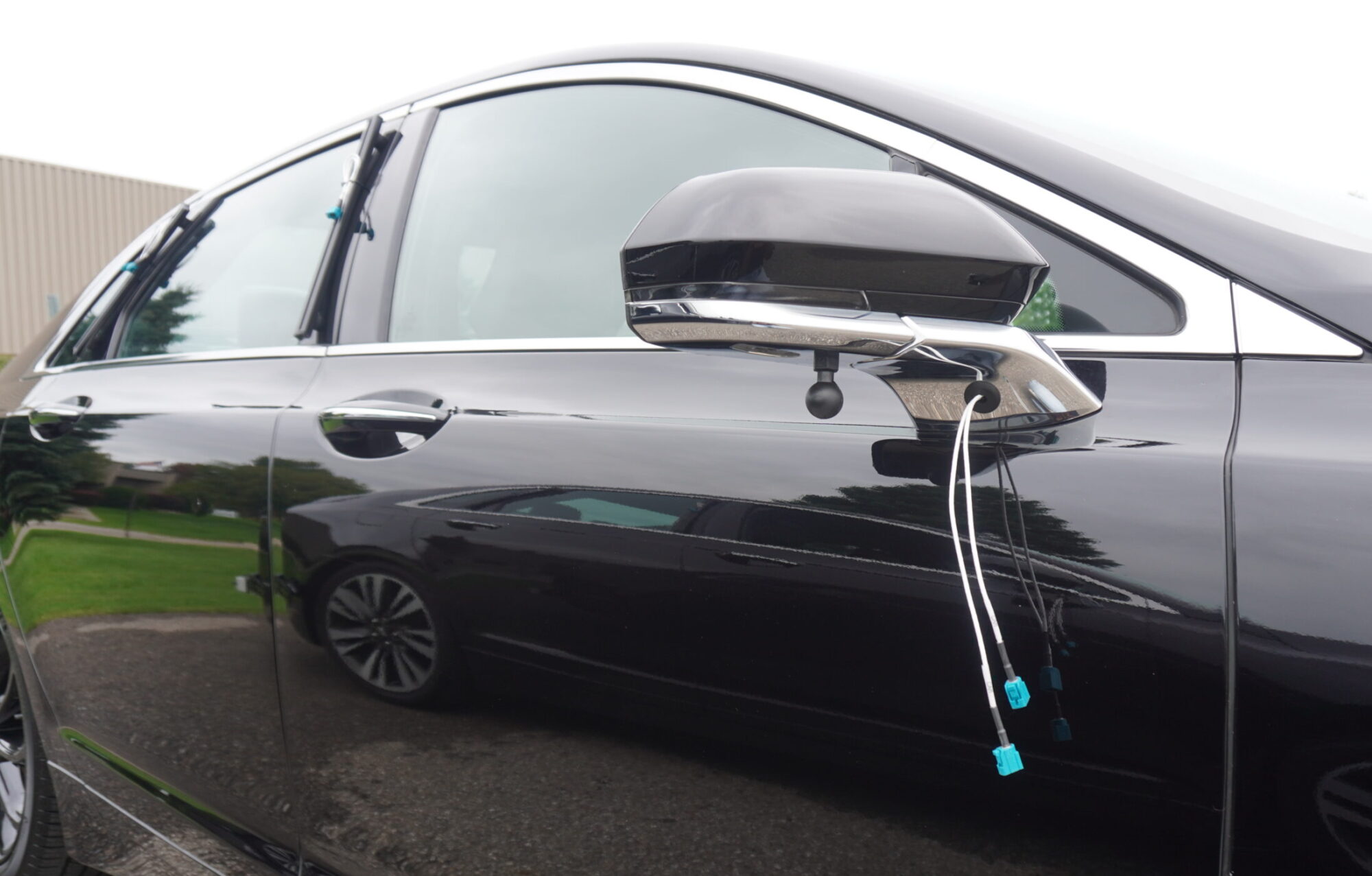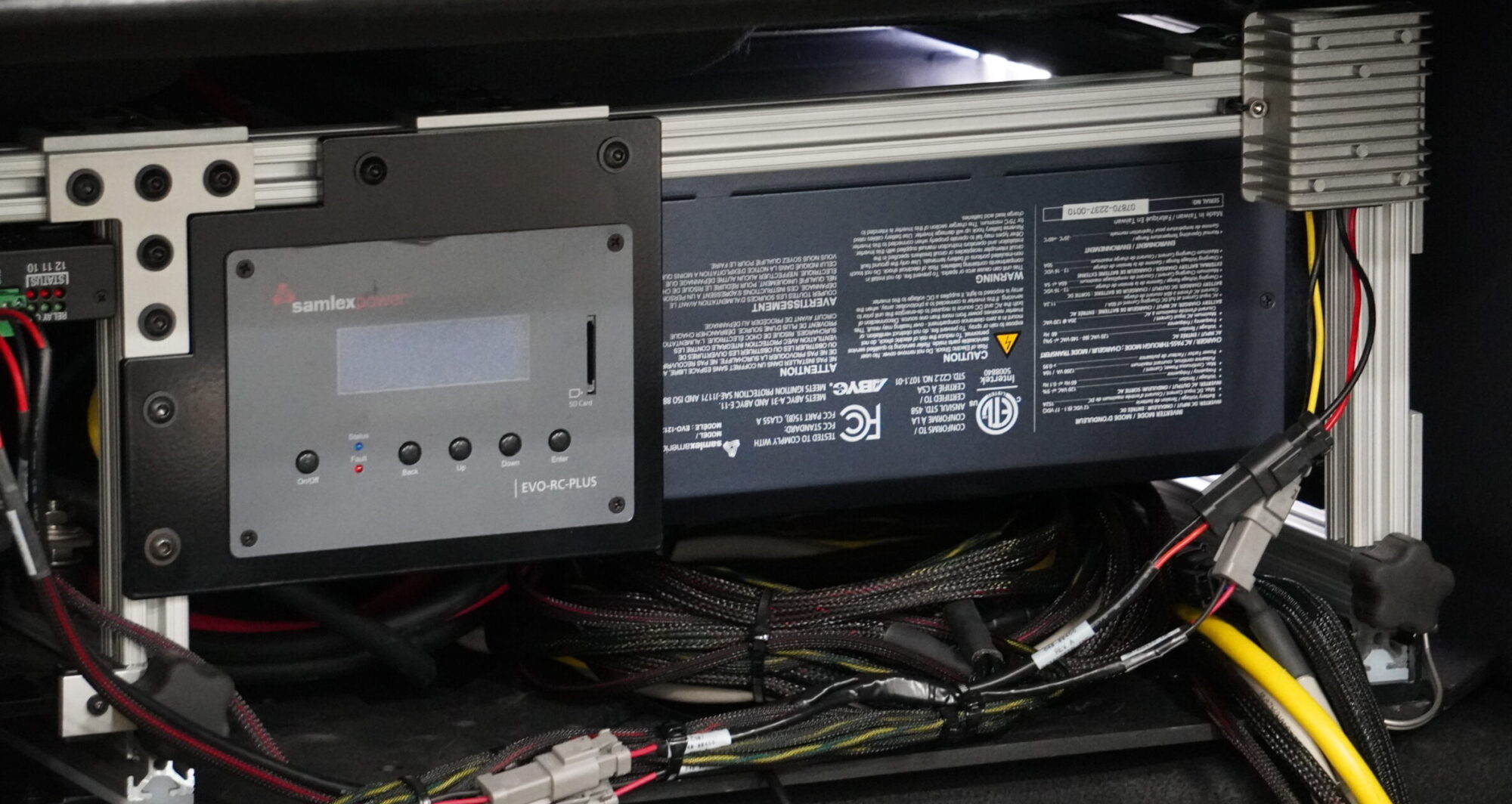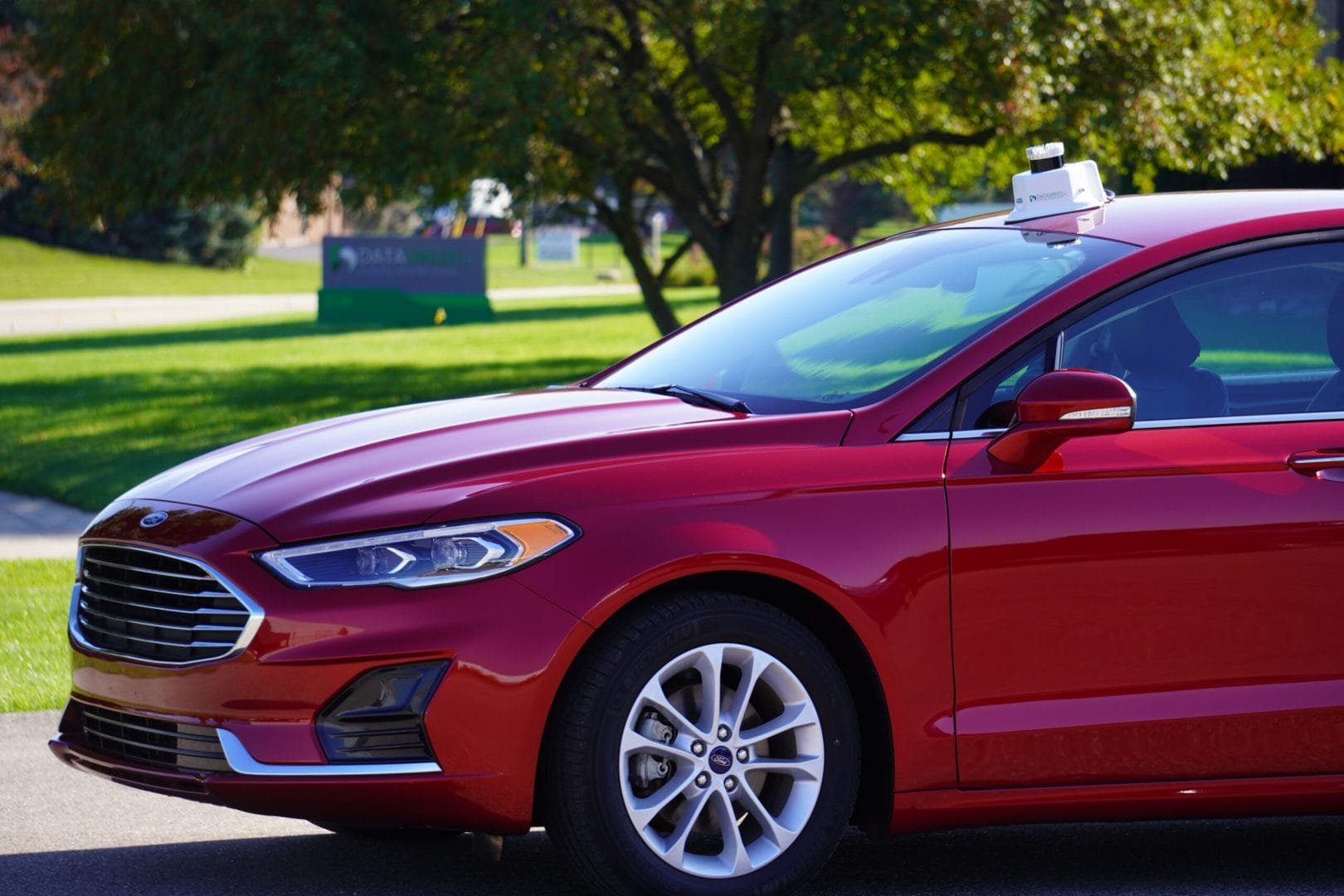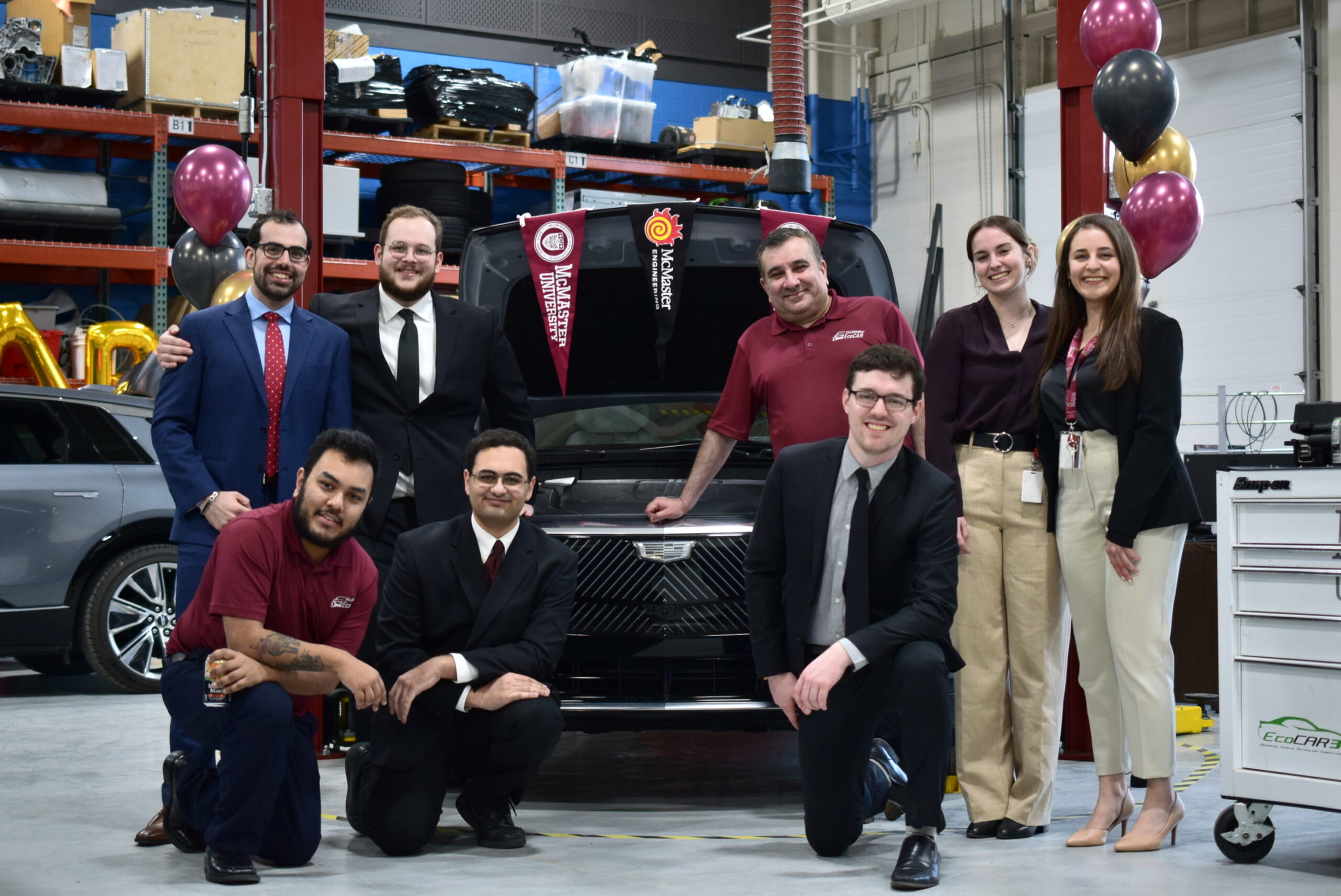Project Overview
- Primary objective: A leader in AI reached out to Dataspeed with the intention of creating a small fleet of autonomous capable customer demonstration vehicles to showcase their camera capabilities.
- Vehicle platform: Lincoln MKZ
Integrations
In order to showcase the customer’s camera capabilities, the demonstration vehicles went through a complete integration process that included the installation of Dataspeed’s Drive-by-Wire (DBW) kit, intelligent Power Distribution System (iPDS) and a decked-out instrumentation rack in the trunk.
Cooling System
The Dataspeed team engineered a cooling system for the high-powered PCs and other electronics that were stationed in the instrumentation rack. The cooling system uses powerful fans with custom 3D printed brackets that pull cold air in from the main cabin when the air conditioning is on.
Flexible hoses are mounted in the trunk to effectively exhaust the air in the trunk and to keep the temperature in the trunk at an acceptable level. The entire cooling system is connected to the iPDS unit’s digital touchscreen that is mounted in the front cupholder.


Custom Brackets
Additional custom brackets were created for a specialized cable entry and routing system for the customer’s cameras. To enhance the customer’s integration experience, ball mounts and cables were added beneath the side view mirrors, allowing them to securely attach their cameras at their leisure. 80/20 rails were added to the B and C pillars of the vehicles with two cables at each pillar.
The purpose of these rails is so the customer can try out various camera configurations that can face forward, backward, and out. All of the cables are routed back into the trunk. Bumper bars were placed on the front and rear of the vehicles with 3 radars on each bar.
Shore Power System
A shore power system was installed in the instrumentation rack, which included a Samlex inverter charger and monitor. The shore power system is crucial since the customer will be using high-end computers in the trunk, and these computers consume a high amount of power.
Alongside the shore power system, a separate ethernet port was also installed. A power connector to allow for an external power supply without opening the trunk was integrated in the rear bumper bar of the vehicle. The external power supply allows for the shore power system to avoid draining the vehicle’s battery and to power all accessories while the engine is off. This is essential for lab and garage settings where extended testing occurs in limited ventilation environments.

What’s Next?
Our customer will utilize these vehicles for customer demonstrations, showcasing the capabilities of their top-of-the-line cameras. If you are interested in having a custom project vehicle for your autonomous research and development project, please don’t hesitate to request a quote today.
Share
Explore More

AI Test Vehicle for NIST
Project Overview Primary objective: The project goal for National Institute of Standard and Technology (NIST) is to provide measurement methods and metrics to study the interaction

Modular Camera Suite Integration for AI Leader
Project Overview Primary objective: A leader in AI reached out to Dataspeed with the intention of creating a small fleet of autonomous capable customer demonstration

McMaster’s Innovative Use of Dataspeed iPDS in EcoCAR EV Challenge
Dataspeed is a Supporter level sponsor of the EcoCAR EV Challenge and has donated an intelligent Power Distribution System (iPDS) to each team. The McMaster

